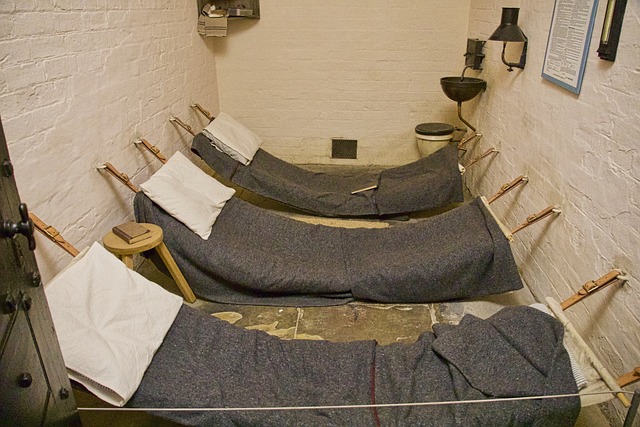DUI laws targeting youth safety often contain loopholes in DUI legislation that encourage experimental drinking and driving, posing significant risks to adolescent brain development. Addressing these loopholes through stricter BAC limits, graduated licensing, enhanced penalties, and educational initiatives is vital for community engagement and prevention efforts. Programs targeting specific loopholes in DUI legislation are making strides with peer education and tech solutions, aiming to break risky behavior cycles.
In the pursuit of safeguarding our youth, preventing early DUI (Drunk Driving Underage) is paramount. This article delves into critical aspects of combating this pervasive issue. We examine loopholes in current DUI legislation and their impact on young lives, highlighting the long-term effects of early alcohol exposure. Through strategic analysis, we propose reinforcement of DUI laws tailored for young drivers. Community engagement emerges as a vital tool, with success stories showcasing effective programs making a tangible difference in curbing underage drinking and driving.
- Understanding DUI Laws and Their Current Loopholes
- The Impact of Early Exposure to Alcohol on Youth
- Strategies to Strengthen DUI Legislation for Young Drivers
- Community Engagement: A Key Component in Prevention
- Success Stories: Programs Making a Difference
Understanding DUI Laws and Their Current Loopholes

DUI (Driving Under the Influence) laws are designed to protect public safety by preventing individuals from operating vehicles while impaired. However, despite their intent, current legislation often contains loopholes that allow for potential abuse and non-compliance. These loopholes can include varying blood alcohol content (BAC) limits across different jurisdictions, exceptions for medical or religious purposes, and ambiguous definitions of impairment. Understanding these legal intricacies is crucial in the ongoing battle against early DUI among youth.
The variability in DUI laws creates a complex landscape where young drivers might inadvertently fall through the cracks. For instance, while some states have set the BAC limit at 0.02 for those under 21, others allow for higher limits or exemptions that could enable experimental drinking and driving. Moreover, loopholes related to medical marijuana use or certain prescription medications can further complicate matters, as these substances may still impair judgment even if they are legally obtained. Recognizing and addressing these loopholes is essential in strengthening DUI prevention efforts and ensuring a safer environment for young people.
The Impact of Early Exposure to Alcohol on Youth

Early exposure to alcohol can have profound and long-lasting effects on young minds and bodies. Research indicates that adolescents who start drinking at a younger age are more likely to develop dependencies, exhibit poor decision-making skills, and face cognitive impairments later in life. This is partly due to the developing nature of a teenager’s brain, which is more vulnerable to the damaging effects of alcohol. The neural connections that form during adolescence are still maturing, making young people more susceptible to addiction and behavior alterations.
Loopholes in DUI legislation often fail to account for these developmental differences, leading to inadequate prevention strategies. Many underage drinking cases go unpunished due to technicalities or lenient sentencing, creating a false sense of security among youth. This encourages risky behaviors, as they may not fully comprehend the consequences of their actions. Addressing these loopholes requires a comprehensive approach that considers the unique challenges faced by young people, ensuring effective prevention and education initiatives.
Strategies to Strengthen DUI Legislation for Young Drivers

Strengthening DUI legislation for young drivers involves addressing existing loopholes and implementing stricter measures to deter early alcohol consumption behind the wheel. One approach is to lower legal blood alcohol limits (BAC) specifically for minors, making it more challenging for them to operate a vehicle while impaired. Additionally, implementing graduated licensing systems can help phase in driving privileges for teens, gradually increasing their independence with corresponding responsibilities and restrictions.
Another strategic move is enhancing penalties for young DUI offenders, including harsher fines, extended license suspensions, or even community service. Educational initiatives targeting youth about the dangers of drunk driving and promoting responsible drinking habits can also be effective in changing behavior. By closing loopholes and employing these targeted strategies, communities can work towards reducing early DUI incidents among young drivers.
Community Engagement: A Key Component in Prevention

Community engagement plays a pivotal role in combating early DUI (drunk driving under age) incidents by targeting and closing loopholes in existing DUI legislation. Through active involvement, community leaders, schools, and organizations can raise awareness about the dangers of underage drinking and its legal consequences. Educational programs, workshops, and interactive campaigns aimed at youth can help dispel myths and misperceptions surrounding alcohol consumption, providing a clear understanding of responsible decision-making.
Engaging directly with young people in their own spaces—social media platforms, community events, and peer-to-peer discussions—can be highly effective. By fostering open conversations about the impact of DUI, peers can influence each other positively, creating a culture of accountability. Additionally, collaborating with law enforcement agencies to implement targeted initiatives ensures that prevention efforts are well-coordinated and responsive to local needs, further strengthening the community’s ability to prevent early DUI cases.
Success Stories: Programs Making a Difference

In the ongoing battle against drunk driving, success stories of youth prevention programs are emerging as powerful tools to combat early DUI (Driving Under the Influence) cases. These initiatives have been tailored to address specific loopholes in DUI legislation that often go unnoticed by young drivers and law enforcement alike. By focusing on education and awareness, these programs aim to break the cycle of risky behavior.
For instance, some innovative approaches involve peer-to-peer education, where teenagers lead discussions on the dangers of drunk driving, sharing personal stories and experiences. This strategy leverages the power of social influence, as peers are more likely to listen and heed warnings from their own age group. Additionally, technology has played a pivotal role, with apps designed to promote responsible drinking and provide alternative transportation options, helping young people make informed choices and avoid becoming another statistic in DUI-related accidents.
In addressing the pressing issue of underage drinking and driving, it’s evident that a multi-faceted approach is required. By understanding the loopholes in current DUI legislation and their detrimental impact on youth, we can implement effective strategies to strengthen laws and empower communities. Early education and community engagement play a pivotal role in prevention, as evidenced by successful programs making a tangible difference. It’s imperative that we unite efforts to close these loopholes, foster responsible behavior, and ensure our young people’s safety on the roads.






